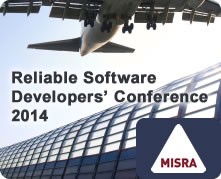Exa Corporation isa global innovator of fluids simulation solutions for product engineering, stated that Cummins Inc. and Peterbilt Motors Company, the first automobile computer companies to announce their SuperTruck for the Department of Energy (DOE) SuperTruck Program, credited Exa’s technology and engineering expertise as instrumental in the success of their recently announced vehicle. Exa worked with engineers from both Cummins and Peterbilt to perform vehicle pc and thermal simulations to achieve ignificant efficiency improvements throughout the tractor, trailer and engine. These simulations, done long before a physical prototype was ever created, helped this SuperTruck exceed the required 50% efficiency improvement, and deliver a 75% more efficient truck — ahead of schedule.
The remarkable improvements were made possible through the collaboration of two world-class automobile computer companies. They evaluated the entire truck from the underhood cooling requirements and engine housing, to every part of the tractor and trailer. “It was not one aerodynamic or thermal simulation that made the difference,” stated David Koeberlein, Cummins’ Program Lead for the SuperTruck program. “Using Exa’s vehicle pc simulations, we were able to rapidly find and address areas of thermal and aerodynamic efficiency throughout the truck — it was a critical resource for our vehicle pc team.”
The in-vehicle computer project started with Cummins’ engineers digitally packaging their new, energy efficient automobile computer, designed with a waste heat recovery system, into the Peterbilt tractor CAD geometry. They then added heat exchangers, and simulated the thermal performance of the complete system. “Exa’s technology was able to quickly demonstrate, through simulation alone, optimal cooling package design,” remarked Jon Dickson, Cummins Engineering Manager of Advanced In-Vehicle Computer Integration. “To package the new waste heat recovery condenser, we had to redesign the vehicle heat exchanger system and use a non-traditional layout. We were able to use Exa’s PowerCOOL and PowerTHERM to identify areas to improve thermal performance while maximizing aerodynamic efficiency — years before any vehicle was built.”
At the same time, Landon Sproull, Peterbilt Chief Engineer, and Rick Mihelic, Peterbilt Manager of Vehicle Performance and Engineering Analysis, were evaluating their vehicle pc and trailer combinations for aerodynamic/thermal performance. “Over the course of three years, we ran hundreds of simulations to test and analyze every part of this in-vehicle computer using Exa PowerFLOW,” stated Mihelic. “We designed a complete new SuperTruck aerodynamic package which included visible devices such as trailer skirts and wheel well covers as well as unseen, but critical, underbody shields that optimize airflow and thermal efficiency.” Sproull added, “Using visualization of the simulation results, our team analyzed each area looking for opportunities for improvement. Our designers and engineers could easily review and discuss results and optimization options — something simply not possible in a wind tunnel. It was this comprehensive in-vehicle computer analysis that helped us to achieve our extreme efficiency savings that exceeded even the aggressive goals set by the DOE.”
“Each day our customers seek efficiency improvements using our aerodynamic, thermal and acoustic solutions,” remarked Stephen Remondi, Exa’s President and CEO. “We have been working with Peterbilt for many years and were pleased to see them use Exa’s solutions so effectively as part of this important initiative that will benefit us all in the end.”
About Exa Corporation
Exa Corporation develops, sells and supports simulation software and services to enhance automobile computer product performance, reduce product development costs and improve the efficiency of design and engineering processes. Exa’s simulation solutions enable our customers to gain crucial insights about design performance early in the design cycle, thus reducing the likelihood of expensive redesigns and late-stage engineering automobile computer changes. As a result, Exa’s customers realize significant cost savings and fundamental improvements in their engineering development process. Exa’sproducts include, PowerFLOW, PowerDELTA with PowerCLAY, PowerVIZ, PowerSPECTRUM along with professional engineering consulting services. A partial automobile computer customer list includes: AGCO, BMW, Ford, Hyundai, Jaguar Land Rover, Kenworth, MAN, Nissan, Peterbilt, Renault, Scania, Toyota, Volkswagen, and Volvo Trucks.
refer to:
http://embedded-computing.com/news/exas-improvement-cummins-peterbilt-supertruck/


_1_610x458.jpg&container=blogger&gadget=a&rewriteMime=image%2F*)



